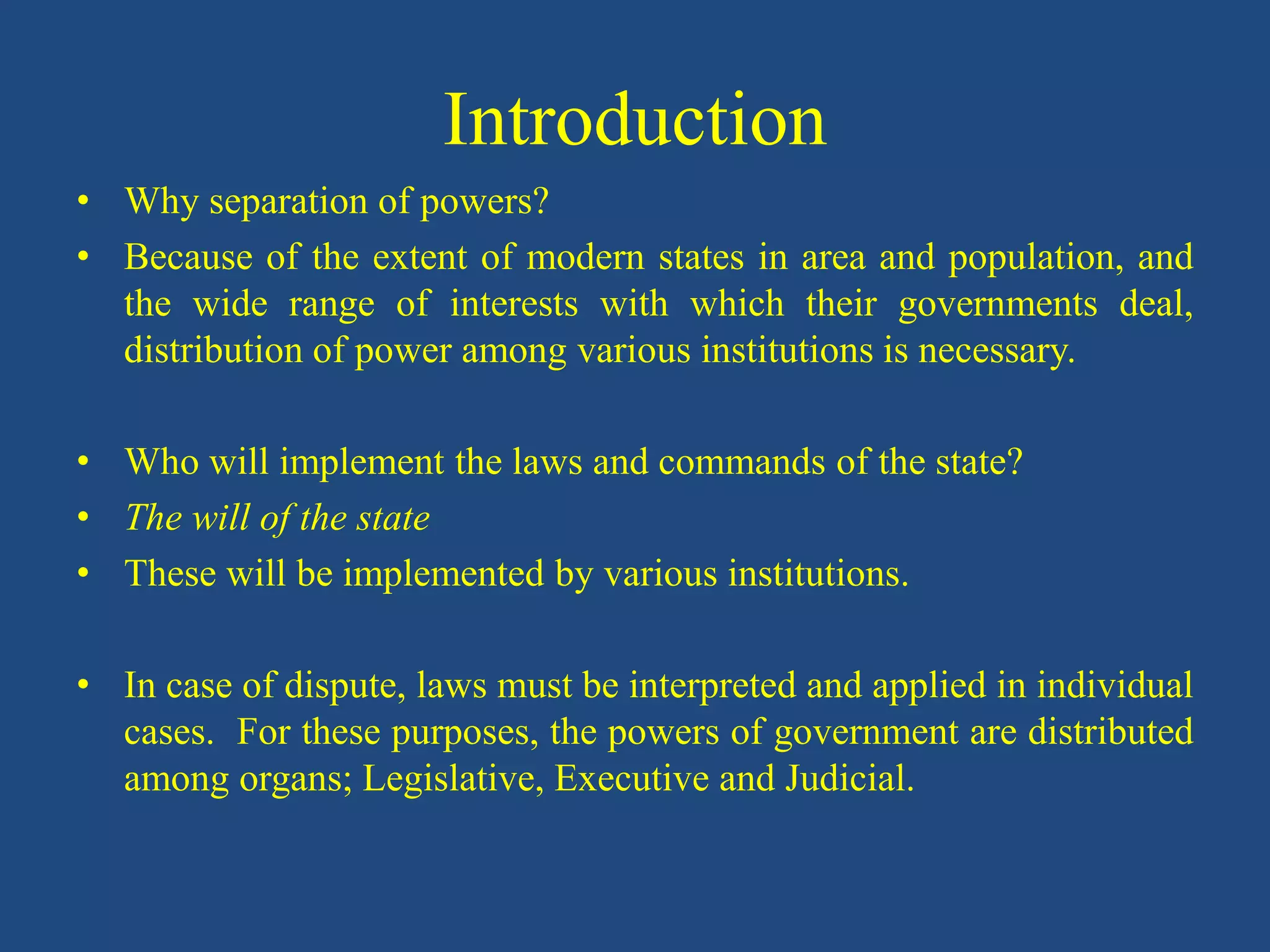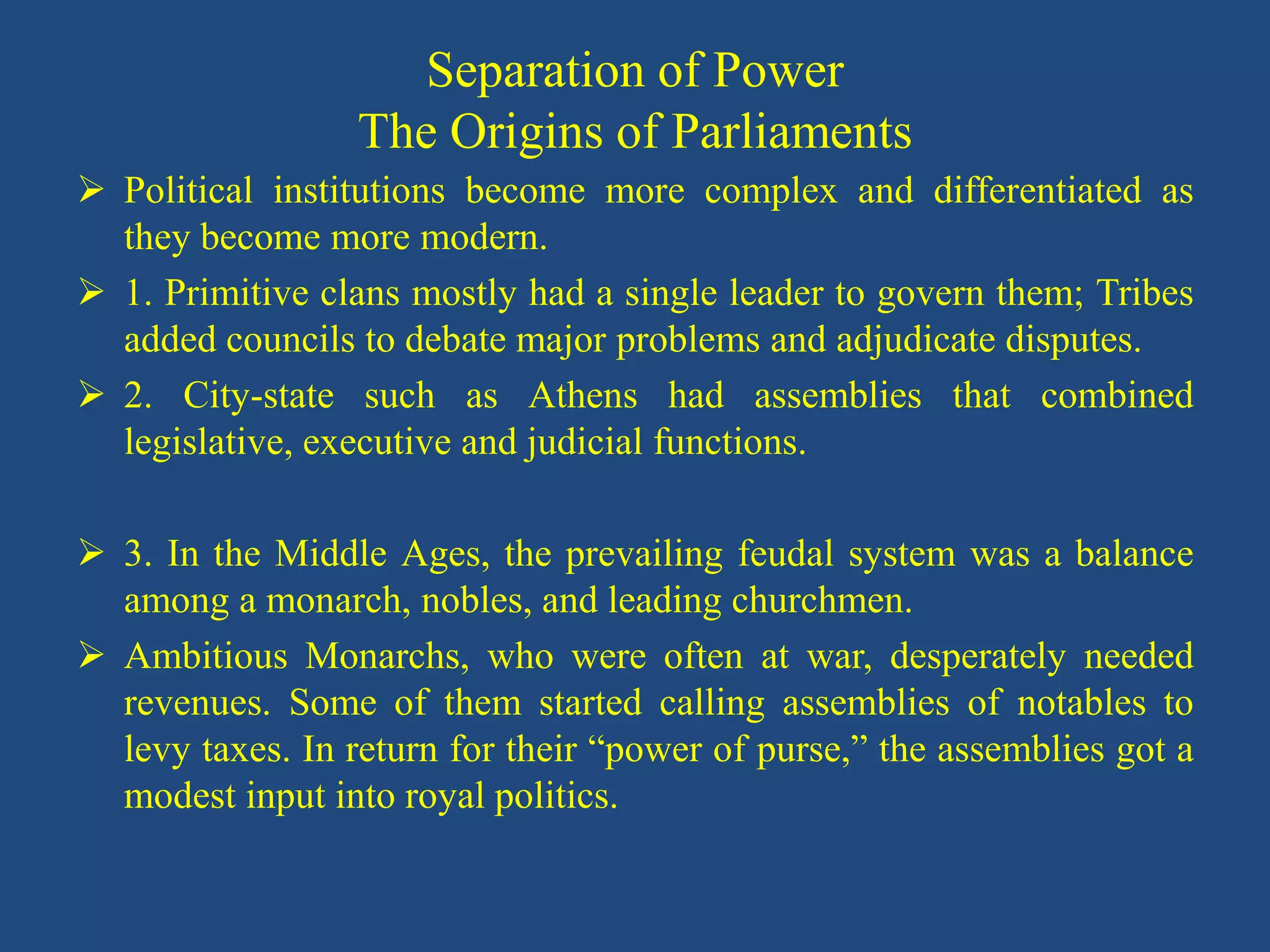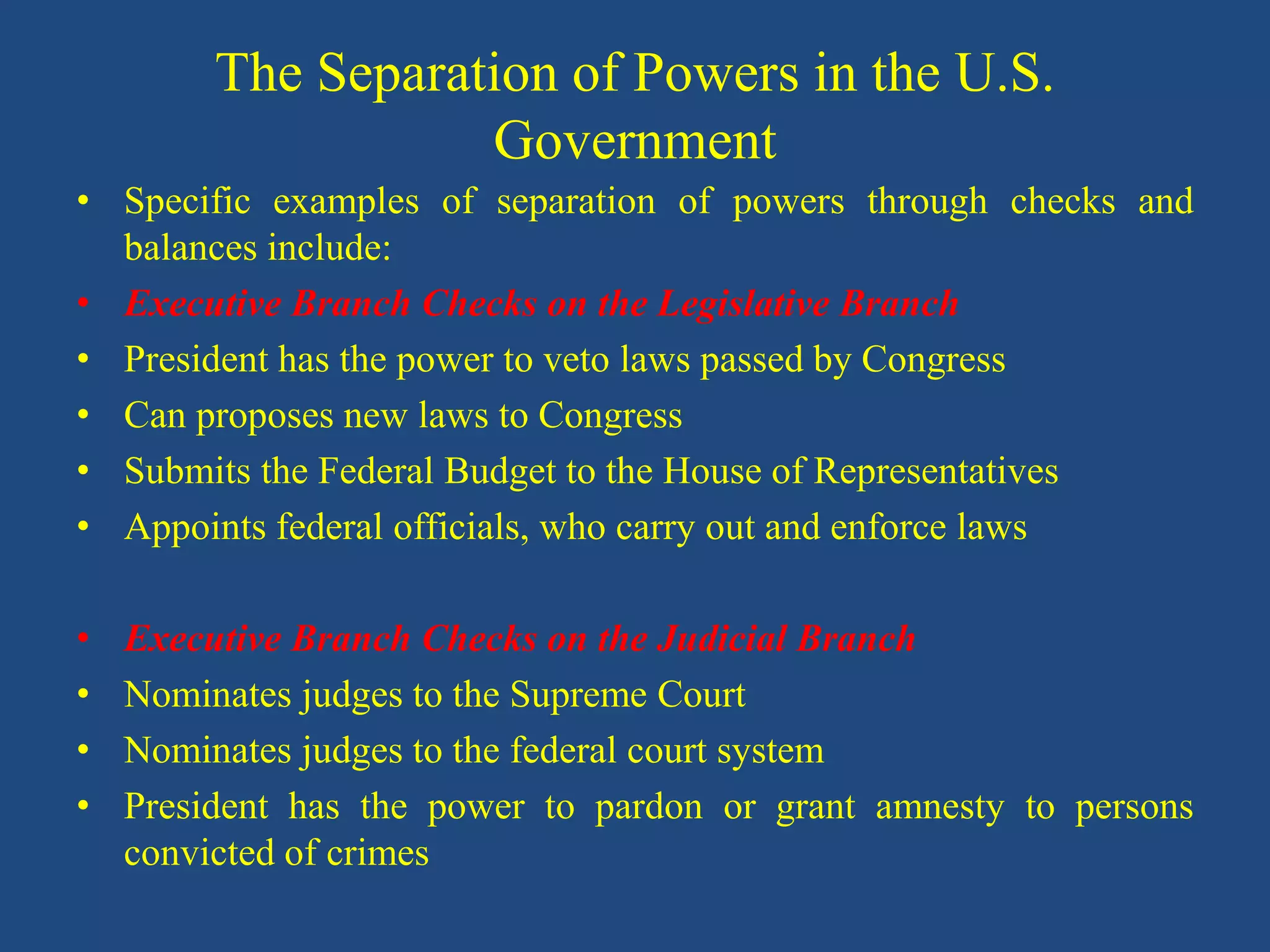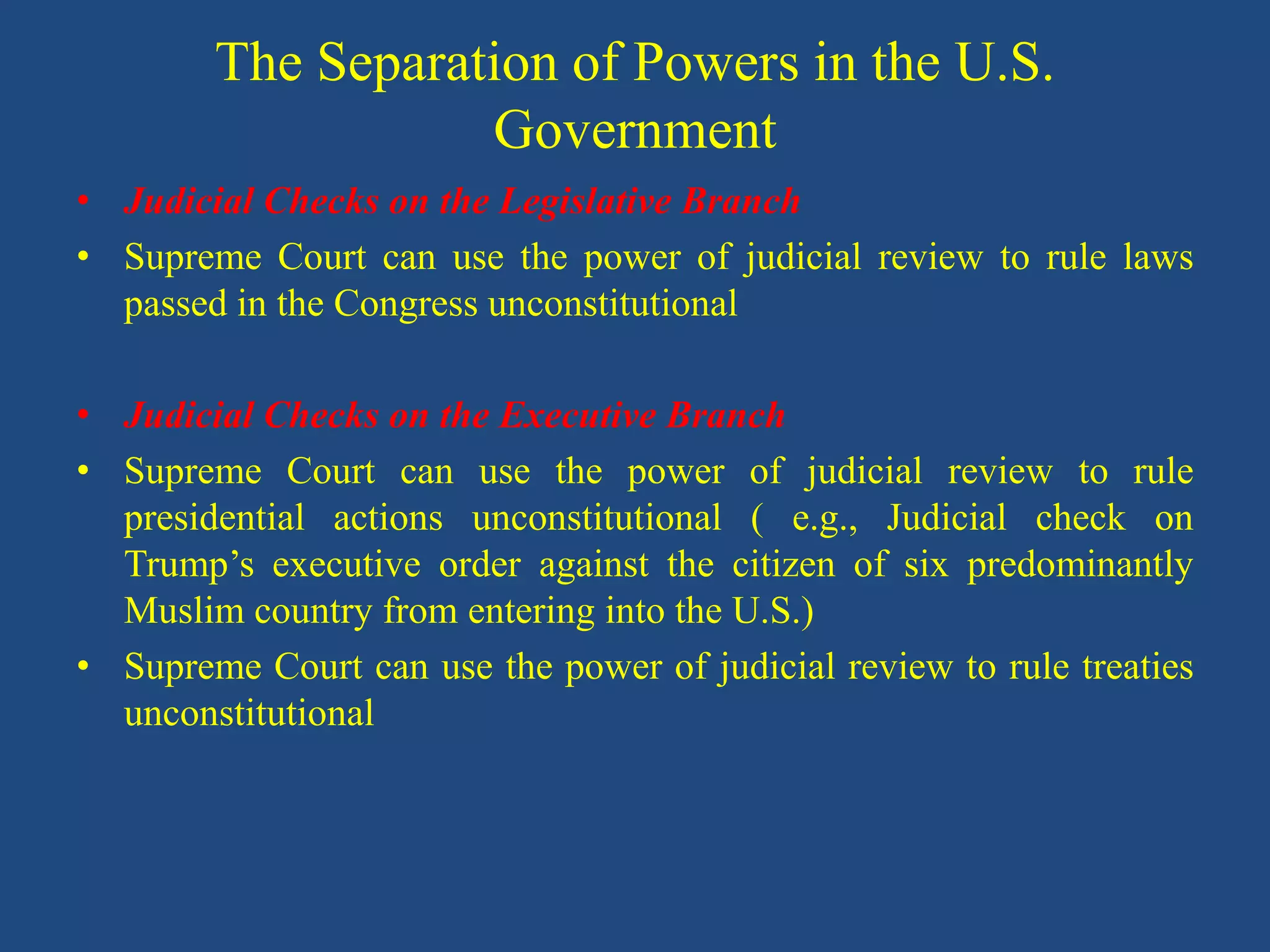The document discusses the concept of separation of powers in the U.S. government. It explains that the framers of the Constitution separated the government into three branches - legislative, executive, and judicial - and established a system of checks and balances to prevent any one branch from becoming too powerful. Specific examples are provided of how each branch acts as a check on the others, such as the president's veto power and the Supreme Court's power of judicial review. The goal of this separation of powers is to protect individual liberty and ensure no single person or branch can control all powers of government.















